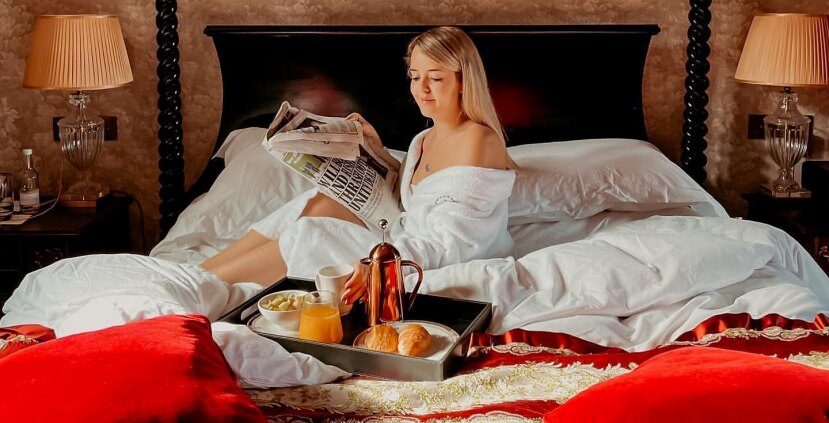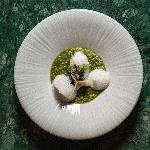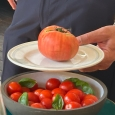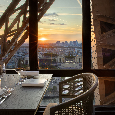
By India Gustin
“Divorced, beheaded, died. Divorced, beheaded, survived.” That is a famous quote from a children’s rhyme about King Henry VIII and his love life. Whilst his ways of ruling the country are long gone, his legacy is still talked about today. Royalty still reigns supreme, especially at Thornbury Castle, a hotel and restaurant nestled in the Gloucestershire countryside. People can experience what it was like to live on castle grounds in Tudor times, with luxury and opulence as a core foundation throughout the property.
In Gloucestershire lies the only Tudor castle-turned-luxury-hotel in all of England. Thornbury Castle is most famous for its connections with King Henry VIII and Anne Boleyn, but more on that later. The 26-bedroom opulent location is also a popular venue for weddings, with large garden spaces and medieval walls scattered around the property. Flower beds and ivy-covered arcs transport guests into an Alice in Wonderland kind of world — specifically the scene where the Queen of Hearts plays croquet with flamingoes as mallets. This very-regal atmosphere is found in every nook and cranny of the castle, including its 15 acres of surrounding gardens. From the intimidating chandeliers over the dining room to the winding paths around the tulip-filled labyrinth, the grounds at Thornbury Castle transport guests to a very British day in Tudor times.
The very man who decided to build the castle was the same man who decided to oppose and butt heads with Henry VIII. You don’t need to be British to know that doing such a thing was a ludicrously bad idea at the time. Edward Stafford, 3rd Duke of Buckingham, commissioned the castle as a further residence in 1511. Rather than a traditional military fortress, the building shows signs of one of the first kind of Tudor semi-fortified country homes. In 1521, Henry VIII ordered for Stafford to be beheaded for treason — no surprise there.

For a period after that, Henry VIII seized the castle. In 1525, a nine-year-old Princess Mary stayed in the castle for 18 days. Henry VIII and Anne Boleyn also famously stayed in the property for ten days in August 1535 during a plague outbreak in Bristol at the time. Today it is possible to ask for the exact room in which they stayed in, with some modern tweaks and renovations of course.
Fast forward several centuries later, the castle was bought by renowned chef, Kenneth Bell, in 1966. For the first time, the property welcomes guests to a culinary experience. Not long after that, a few rooms opened to the public, making it into a restaurant/hotel location. In 2019, a new owner bought the castle, renovating it for the sole purpose of transforming the property into a unique holiday destination. For all the years that it has been active and all the various ownerships it’s had, Thornbury Castle has always lived up to its Tudor heritage.
"This very-regal atmosphere is found in every nook and cranny of the castle, including its 15 acres of surrounding gardens"
Whilst guests have the opportunity to stay in the same room that Henry VIII and Anne Boleyn were rumored to have stayed in, there is another room which has just as much intrigue. At the top of a narrow spiral stone staircase is the Catherine of Aragon Tower Suite. It is located in the South Wing tower, meaning that the views from the windows are unique to those you can get from looking out of a turret. The entire space is meshed with Tudor furnishings: silk wall hangings, 24-carat gilding and stone walls. However, the crown jewel of the room is the four-poster bed. It is the largest one of its kind in the UK, standing in at 10 feet wide.

If the Tudor-decorated rooms or regal gardens aren’t enough to complete a weekend getaway in the British countryside, there is still hope. After checking-in, the hotel accommodates history tours around the castle grounds. Such an introduction ensures that guests can really deep dive into the experience, appreciating the location and Tudor lifestyle just that bit more. Archery, croquet and falconry workshops can also be arranged. After shooting some arrows or admiring the falcons, visitors can enjoy high tea in the dining room or lounge areas of the castle.

Imagination is key when strolling through the gardens and surrounding land. Guests may spot hidden paths, leading them all around the castle walls. It may even be possible to spot the start of what could have been a mote. It’s not difficult to pretend to be a prince or princess for the day in such an authentically laid out terrain outside of a pristinely restored Tudor castle.
"For all the years that it has been active and all the various ownerships it’s had, Thornbury Castle has always lived up to its Tudor heritage"
A stay in a the castle wouldn’t be complete without a fine dining experience to really hone in the once-in-a-lifetime affair. Thornbury Castle offers a wide range of feasting choices: from a complimentary breakfast to private dining and a three course menu. There are vegetarian options as well as a six course tasting menu for those who are most indecisive. To add a bit of flair, guests can also choose to add the wine pairing with their meal. Mouthwatering dish after mouthwatering dish, visitors can indulge in a variety of food from perfectly cooked scallops to beef that melts on the tongue. The cooking at Thornbury Castle is known for one particular detail. The textures that the chefs manage to create are on another culinary level, adding a satisfying surprise to the dishes.

It’s not everyday you can live out your childhood fantasy of running around castle grounds. Doing so in Thornbury Castle is one of the closest opportunities visitors can get given its attention to keeping the Tudor heritage alive.

A night in a four-poster bed is definitely one of the highlights but a falconry workshop, a simple march up one of their spiral staircases or even a walk around the castle walls and hedges is not to be missed. If not for the luxury hotel, go for the authentic Tudor experience of staying in Thornbury Castle.

















